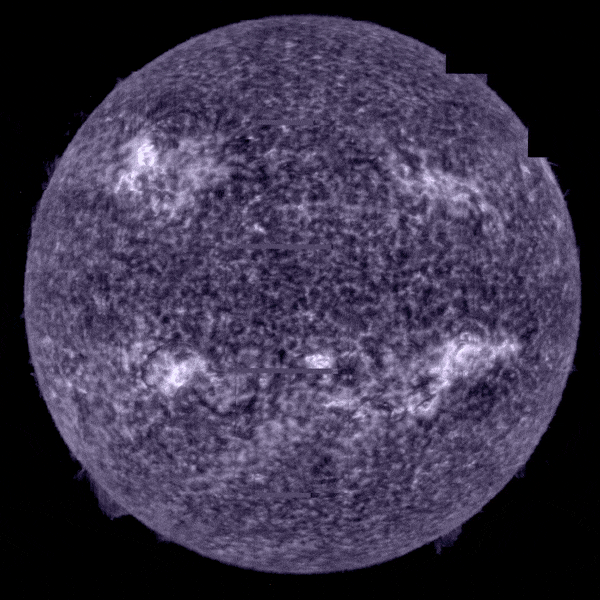NASA and other agencies like the European Space Agency have given us amazing images of the Sun. By capturing the Solar Orbiter Probe, today mankind is studying its star in more detail. It is these details that are surprising and allow us to see the sun as we have never seen it before.
One image taken by the Extreme Ultraviolet Imager (EUI) shows the disk of the Sun complete with the corona at a distance of 75 million km.
To give you an idea, this probe is currently located halfway between the Sun and the Earth.
How do you get a picture with that much detail?
The captured image is actually a collection of several images. The mosaic fits 25 individual images, which, due to its gigantic size, took about 4 hours to complete.
The capture required several photos to be taken from the same location, and for this it was necessary to wait for each cycle to be repeated - for each of these frames it was necessary to wait, on average, 10 minutes.
The result can be seen below, and it originally has more than 83 million pixels. The main aspect that was highlighted was the clarity with which the solar corona is visualized.
SPICE is working on detailing the Earth's star
As mentioned, in this procedure, another tool was also used. It is known as SPICE and was able to determine the layers of the Sun's atmosphere, passing through the corona and the chromosphere.
It was possible to reproduce the optical capture of a wavelength of ultraviolet light that manifests itself in hydrogen gas.
The method was similar to the previous method, and several images were used to create a mosaic of different colors, which serves to illustrate the temperatures of the elements present, such as carbon (temperature: 32,000 ° C) in blue, and hydrogen gas (temperature: 10,000 ° C) in purple, Oxygen (temperature: 320,000 °C) is green, and neon (temperature: 630,000 °C), shown in yellow.
Although it does not bring us the luxury of detail, the truth is that the results are beyond what our eyes can perceive.
Using the data obtained, physicists will be able to determine the eruptions that occur from the solar corona to the inner layers of the atmosphere, and will also be able to investigate why the corona exceeds a million degrees Celsius, while other parts, such as the surface have a temperature of 5000 Celsius "only".
Although the Solar Orbiter is closer to the Sun than it has ever been, it has not yet reached its maximum limit. In fact, according to NASA, until day 26, the probe will be at its closest point to the sun.
The instrument is currently collecting data and images from solar wind particles within Mercury's orbit.

“Coffee trailblazer. Social media ninja. Unapologetic web guru. Friendly music fan. Alcohol fanatic.”


